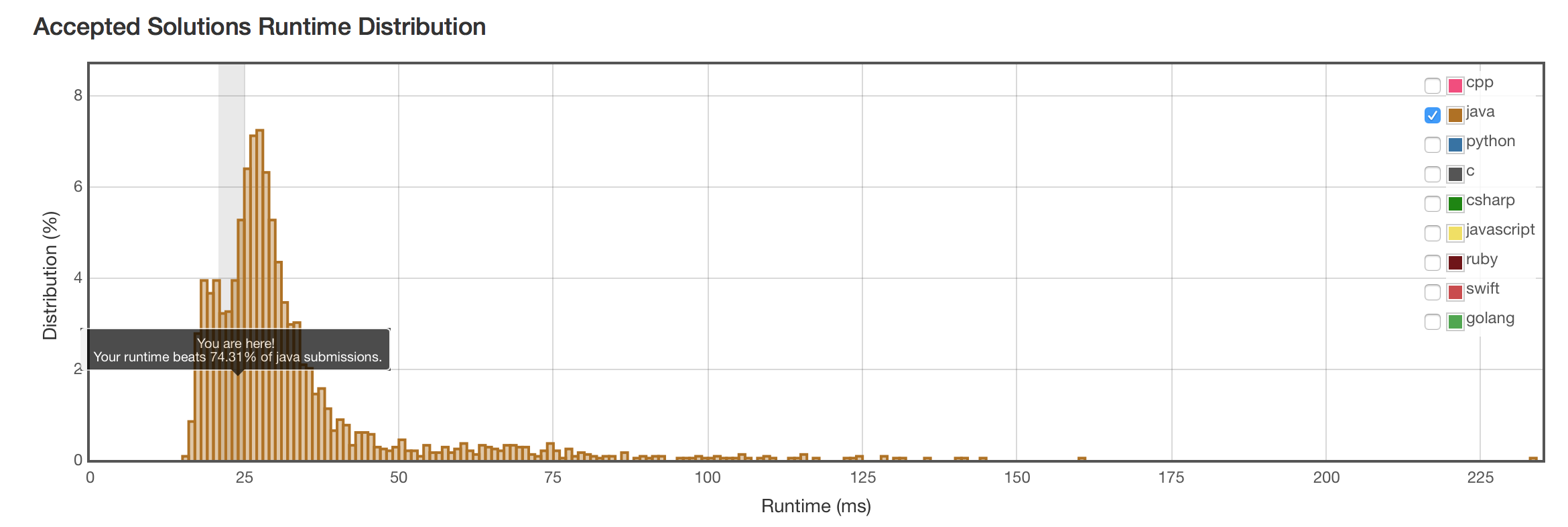主要收获
ROCK the Backtracking!
题目
Given a collection of candidate numbers (C) and a target number (T), find all unique combinations in C where the candidate numbers sums to T.
Each number in C may only be used once in the combination.
Note: All numbers (including target) will be positive integers. The solution set must not contain duplicate combinations. For example, given candidate set [10, 1, 2, 7, 6, 1, 5] and target 8, A solution set is:
[
[1, 7],
[1, 2, 5],
[2, 6],
[1, 1, 6]
]
直接标准回溯算法 \(O(2^n)\)
这题来得非常及时!昨天睡前写了一遍CombinationSum的标准回溯算法,今天早上一起来,正好复习一遍。
主要有两个不同的地方。第一,数字不可以重复使用,所以像[3,4,7,8],第一个数字取了3,接下去递归就不是从3开始,而是从4开始。具体体现到代码,就是下面这一行,注意是i+1,不是i。
backtracking(temp, preRemain, candidates, i+1, target, result); // 注意这里的i+1
第二个不同,要注意重复。考虑[1, 1, 2, 5, 6, 7, 10],目标数8,这个例子,遍历第一个1的时候,能找出[1,2,5]这个组合。然后从第二个1开始,也能找出[1,2,5]的组合。所以需要那第二个1。具体到代码,就是下面做这一行,
if (i != start && candidates[i] == candidates[i-1]) { continue; } // eliminates duplicates
代码
public class Solution {
public List<List<Integer>> combinationSum2(int[] candidates, int target) {
Arrays.sort(candidates);
List<List<Integer>> result = new ArrayList<>();
backtracking(new ArrayList<Integer>(), target, candidates, 0, target, result);
return result;
}
public void backtracking(List<Integer> temp, int remain, int[] candidates, int start, int target, List<List<Integer>> result) {
if (remain == 0) {
result.add(new ArrayList<Integer>(temp));
return;
}
for (int i = start; i < candidates.length; i++) {
if (i != start && candidates[i] == candidates[i-1]) { continue; } // eliminates duplicates
int preRemain = remain - candidates[i];
if (preRemain < 0) { break; } // 剪枝
temp.add(candidates[i]);
backtracking(temp, preRemain, candidates, i+1, target, result);
temp.remove(temp.size()-1);
}
}
}
结果
直接银弹!不啰嗦!
